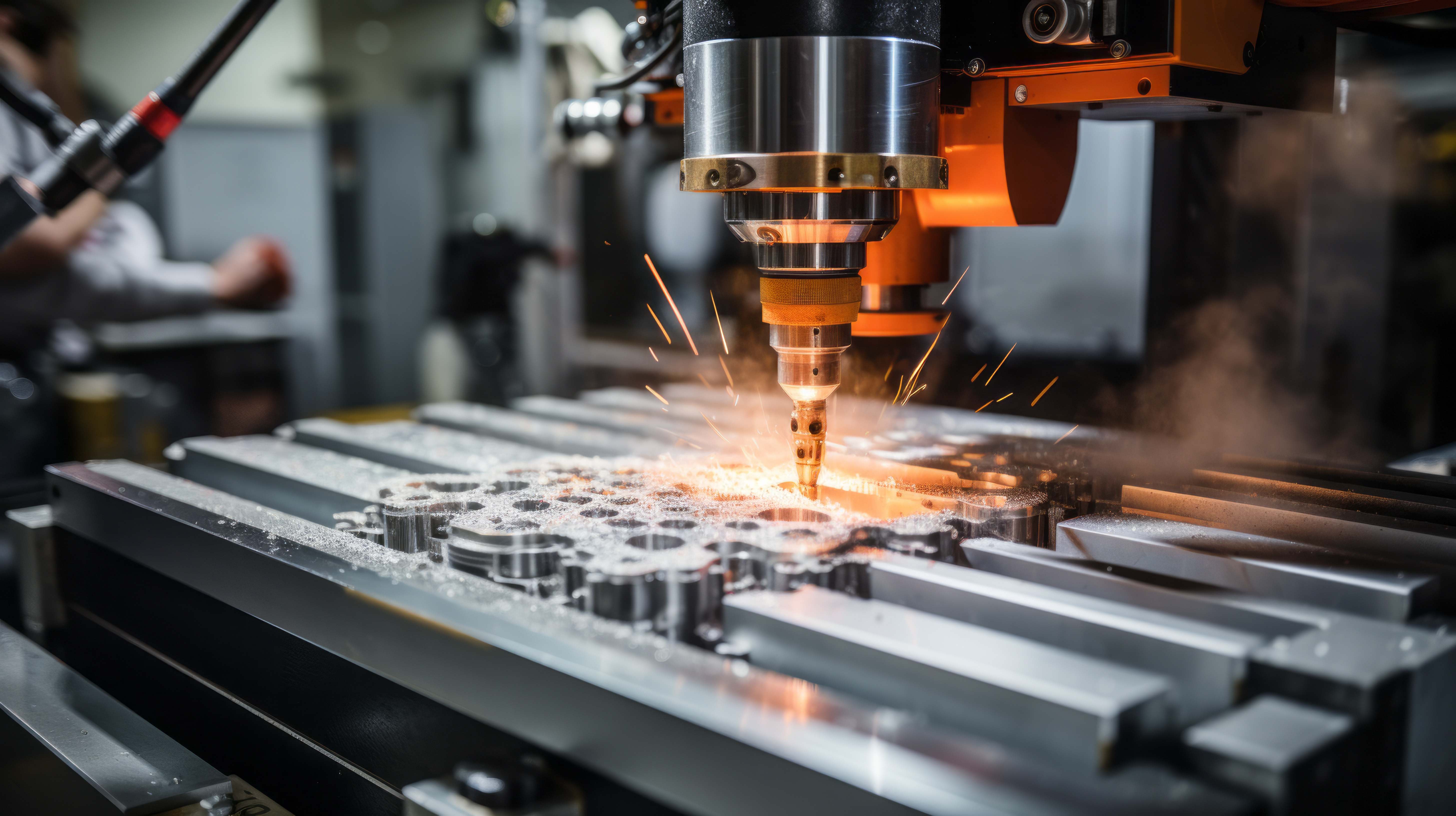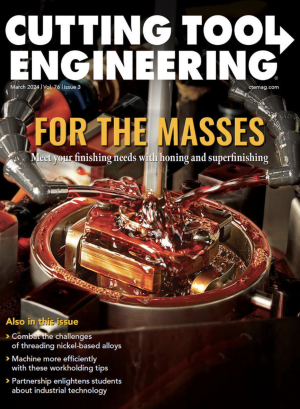Buying a CNC machine is easy. Simply go down to the local distributer, hand over a few bills and become the proud owner of a new machine. Things get a bit more difficult when it comes to programming a CNC machine, but that’s still an easy task to learn. I can take the average person off the street and have them making simple programs in a day or two. Give me a skilled machinist, and that time usually drops to a few hours. Obviously, proficiency and skill are directly proportional to experience and dedication, but programming a CNC machine is not very hard.
I have always been surprised by the number of people who are intimidated by CNC programming when the hard part is getting a workpiece firmly fixed to the machine so the machining can take place. Seriously, the most difficult part of machining (CNC and conventional) is holding the workpiece so that the cutting tool can access the work zone.
I have learned some important lessons over the last 31 years.

Chucks
Keep it simple and make every effort to utilize something that is mass produced and not custom.
If it is a round part, then I try to use a chuck of some kind. Three-jaw chucks, for example, are not just for lathes; they can be used on machining centers, grinders and other machines. A three-jaw chuck can accommodate a range of sizes and is relatively inexpensive and readily available from countless suppliers. When three jaws do not fit the job, chucks also come in two-, six- and four-jaw versions, although these are less common.
Collets
There are also a large variety of devices that use collets for gripping. There is an abundance of collet styles available on the market, and they can be used to grip a large range of diameters as well as non-round geometries like hexagonal and square shapes. Most of the collets
on the market hold an infinite number of sizes inside of their working range. Collets are one the most versatile workholding tools that a shop can purchase.
Vises
Vises are almost as versatile as collets and chucks. Unlike a chuck, a vise does not work well for turning applications, although I’m sure someone has probably mounted one to a faceplate in the past. While they are configured to hold rectilinear parts, a creative machinist can hold almost anything with them. They can be used alone or combined with other vises to hold multiple parts on a machine. Or you could use multiple vises to hold one large part.
Magnetic Chucks
Magnetic chucks typically found on surface grinders are another good choice for workholding. Although they do not grip parts as robustly as the other tools mentioned, they are versatile and can be machined to accept odd shapes. For light milling or turning they are an alternative, especially for small parts that are difficult to hold.
Chucks, vises and collets all share a similar feature that gives them universal appeal. That is the ability to machine the jaws or collet so that they can accept almost any workpiece geometry. It is common to see a machinist preparing soft jaws for a lathe — especially a CNC lathe — but vises also can be outfitted with soft jaws. Vise makers have a large selection of soft jaws that can be machined to hold parts that do not work well with the hard flat jaws that come standard on a vise. Soft machinable collets are also available for the various collet chucks. These are an ideal way to hold extrusions and other odd shapes in a lathe, mill or multi-axis machine.
When a Custom Solution is Needed
Sometimes vises, chucks, collets and other off-the-shelf workholding will not suffice, and custom, dedicated fixtures are necessary. There are important considerations for these instances.
Like off-the-shelf workholding, keep it simple. When designing custom fixtures, focus on minimizing the number of components. Where possible use off-the-shelf components like locators and clamps rather than designing custom components. This reduces the cost of acquisition and maintenance.
Design fixtures that are screwed and pinned together and avoid welded construction. Replacing welded components is troublesome; it is much easier to unscrew the old part and screw on the new one. Pinning the components also prevents movement during use and ensures the new components are located correctly when installed.
Where possible, include poke yoke or error-proofing features to help ensure quality. These might be pins that fit snuggly in an important hole or having features that nest together. There are countless ways to poke yoke a fixture when a little creativity is applied.
A good fixture should be easy to use and not require extra labor when, for example, indicating to get a part aligned. I have seen and used fixtures that require the machinist to indicate, measure and adjust the part to ensure proper alignment in the machine. While this is necessary in rare situations, often with expensive materials, it should be avoided whenever possible.
The best advice I can give is to imitate and copy. While I am not suggesting that you steal intellectual property, there are a lot of great ideas that can be borrowed from seasoned machinists. Observe how others make fixtures. Keep the good ideas and reuse them. Of course, the internet is a great source for ideas, and trade shows are also an excellent place to learn.
Programming a machine is easy, especially with modern software. Holding parts so that the machining operation is efficient is far more difficult. Keep things simple, borrow good ideas and simplify. If you do these things, your workholding will be successful.
Related Glossary Terms
- centers
centers
Cone-shaped pins that support a workpiece by one or two ends during machining. The centers fit into holes drilled in the workpiece ends. Centers that turn with the workpiece are called “live” centers; those that do not are called “dead” centers.
- chuck
chuck
Workholding device that affixes to a mill, lathe or drill-press spindle. It holds a tool or workpiece by one end, allowing it to be rotated. May also be fitted to the machine table to hold a workpiece. Two or more adjustable jaws actually hold the tool or part. May be actuated manually, pneumatically, hydraulically or electrically. See collet.
- collet
collet
Flexible-sided device that secures a tool or workpiece. Similar in function to a chuck, but can accommodate only a narrow size range. Typically provides greater gripping force and precision than a chuck. See chuck.
- computer numerical control ( CNC)
computer numerical control ( CNC)
Microprocessor-based controller dedicated to a machine tool that permits the creation or modification of parts. Programmed numerical control activates the machine’s servos and spindle drives and controls the various machining operations. See DNC, direct numerical control; NC, numerical control.
- fixture
fixture
Device, often made in-house, that holds a specific workpiece. See jig; modular fixturing.
- flat ( screw flat)
flat ( screw flat)
Flat surface machined into the shank of a cutting tool for enhanced holding of the tool.
- gang cutting ( milling)
gang cutting ( milling)
Machining with several cutters mounted on a single arbor, generally for simultaneous cutting.
- lathe
lathe
Turning machine capable of sawing, milling, grinding, gear-cutting, drilling, reaming, boring, threading, facing, chamfering, grooving, knurling, spinning, parting, necking, taper-cutting, and cam- and eccentric-cutting, as well as step- and straight-turning. Comes in a variety of forms, ranging from manual to semiautomatic to fully automatic, with major types being engine lathes, turning and contouring lathes, turret lathes and numerical-control lathes. The engine lathe consists of a headstock and spindle, tailstock, bed, carriage (complete with apron) and cross slides. Features include gear- (speed) and feed-selector levers, toolpost, compound rest, lead screw and reversing lead screw, threading dial and rapid-traverse lever. Special lathe types include through-the-spindle, camshaft and crankshaft, brake drum and rotor, spinning and gun-barrel machines. Toolroom and bench lathes are used for precision work; the former for tool-and-die work and similar tasks, the latter for small workpieces (instruments, watches), normally without a power feed. Models are typically designated according to their “swing,” or the largest-diameter workpiece that can be rotated; bed length, or the distance between centers; and horsepower generated. See turning machine.
- milling
milling
Machining operation in which metal or other material is removed by applying power to a rotating cutter. In vertical milling, the cutting tool is mounted vertically on the spindle. In horizontal milling, the cutting tool is mounted horizontally, either directly on the spindle or on an arbor. Horizontal milling is further broken down into conventional milling, where the cutter rotates opposite the direction of feed, or “up” into the workpiece; and climb milling, where the cutter rotates in the direction of feed, or “down” into the workpiece. Milling operations include plane or surface milling, endmilling, facemilling, angle milling, form milling and profiling.
- milling machine ( mill)
milling machine ( mill)
Runs endmills and arbor-mounted milling cutters. Features include a head with a spindle that drives the cutters; a column, knee and table that provide motion in the three Cartesian axes; and a base that supports the components and houses the cutting-fluid pump and reservoir. The work is mounted on the table and fed into the rotating cutter or endmill to accomplish the milling steps; vertical milling machines also feed endmills into the work by means of a spindle-mounted quill. Models range from small manual machines to big bed-type and duplex mills. All take one of three basic forms: vertical, horizontal or convertible horizontal/vertical. Vertical machines may be knee-type (the table is mounted on a knee that can be elevated) or bed-type (the table is securely supported and only moves horizontally). In general, horizontal machines are bigger and more powerful, while vertical machines are lighter but more versatile and easier to set up and operate.
- turning
turning
Workpiece is held in a chuck, mounted on a face plate or secured between centers and rotated while a cutting tool, normally a single-point tool, is fed into it along its periphery or across its end or face. Takes the form of straight turning (cutting along the periphery of the workpiece); taper turning (creating a taper); step turning (turning different-size diameters on the same work); chamfering (beveling an edge or shoulder); facing (cutting on an end); turning threads (usually external but can be internal); roughing (high-volume metal removal); and finishing (final light cuts). Performed on lathes, turning centers, chucking machines, automatic screw machines and similar machines.


